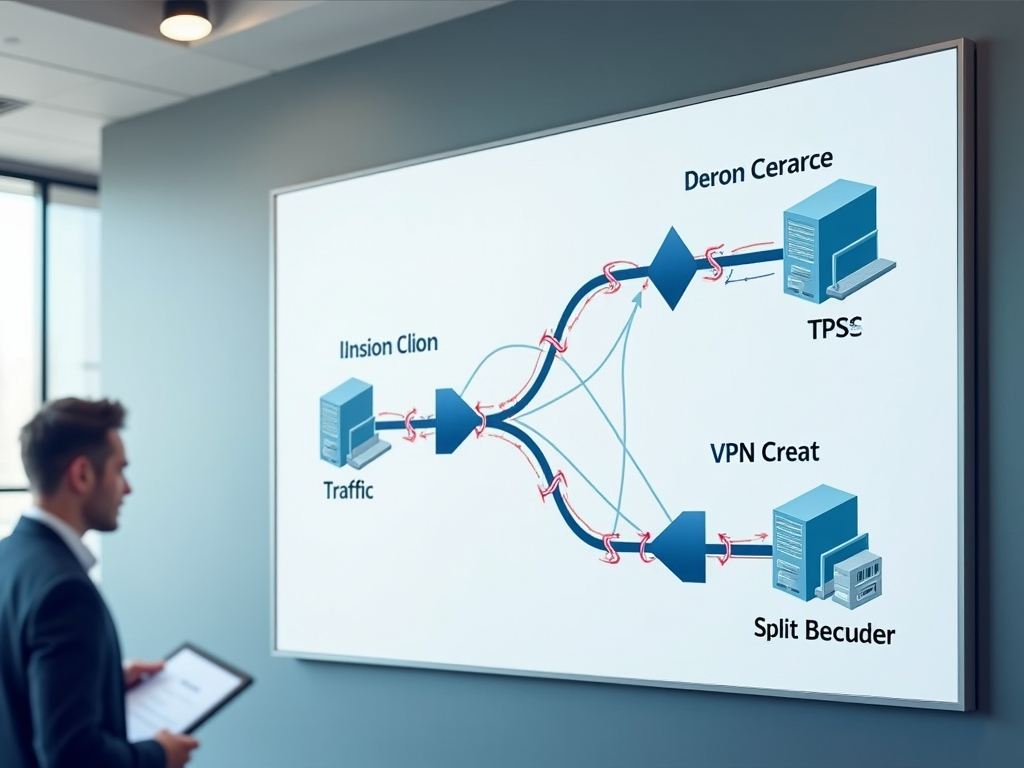VPN Split Tunneling is a sophisticated feature that allows users to route part of their internet traffic through a VPN while letting the rest access the internet directly. This means you can enjoy enhanced security for specific applications while maintaining high speed for others. In this article, we’ll delve into how to effectively use VPN split tunneling, provide insights on its advantages, and address common concerns.
Understanding VPN Split Tunneling

Split tunneling enables you to enjoy the best of both worlds: the security of a VPN and the speed of a direct internet connection. When you enable split tunneling, you have the discretion to choose which applications or websites are covered by the VPN’s encrypted protection. This is particularly useful for accessing local network devices, such as printers, or streaming content that may otherwise be slower over a VPN.
With split tunneling, your work can remain secure while accessing less sensitive data like streaming services directly. This strategy optimizes your internet usage and helps in managing bandwidth. It’s important to ensure that sensitive data such as banking details always travel through the VPN.
Steps to Set Up VPN Split Tunneling

Setting up VPN split tunneling is typically a straightforward process. Below are the basic steps to guide you through:
- Choose a VPN Provider: Ensure your provider supports split tunneling. Popular choices include NordVPN, ExpressVPN, and CyberGhost.
- Access Settings: Open your VPN’s software settings from your device.
- Enable Split Tunneling: Look for an option labeled “Split Tunneling” or similar and enable it.
- Select Apps or Websites: Decide which applications or websites should bypass the VPN. This decision is crucial for optimizing performance.
- Test Connection: After setting up, test your connection to ensure both VPN-protected and direct connections function as desired.
Once configured, you should notice certain apps using your standard internet connection, while others remain secure under the VPN. Always verify these settings, especially when using public Wi-Fi.
Advantages of Using VPN Split Tunneling
The primary advantage of using VPN Split Tunneling is flexibility. It allows you to enjoy the enhanced security of a VPN without compromising on network speed. Another significant benefit is the ability to access local resources simultaneously while staying protected on other online fronts.
Furthermore, split tunneling can conserve bandwidth. For instance, you can choose to route less important data through your regular internet connection rather than the VPN, potentially saving costs as some VPN services charge based on data usage. This feature also helps bypass geographical restrictions when necessary.
Security is heightened with VPNs, but sometimes at the cost of performance. Split tunneling helps balance these two crucial aspects. By only encrypting essential traffic, you maintain the velocity of services like streaming or downloading, which might experience lags if routed through a VPN.
It’s vital to outline and understand which data needs secure encryption because using split tunneling can inadvertently expose sensitive information if not configured correctly. Users should regularly evaluate which pathways need more speed as opposed to protection.
Conclusion
VPN Split Tunneling is an incredibly beneficial tool for anyone looking to optimize their internet experience, blending speed and security effectively. By allowing specific traffic to bypass the VPN, you secure important data while maintaining the efficiency of other online tasks. Whether for personal or professional use, mastering VPN split tunneling can enhance both your speed and security requirements. Always evaluate your security preferences and understand the data flow to use this feature efficiently.
Frequently Asked Questions
What is VPN split tunneling?
VPN split tunneling is a feature that lets users direct part of their internet traffic through a VPN while allowing other data to flow directly through an internet service provider. This provides enhanced security for selected applications while maintaining faster speeds for others.
Is split tunneling safe?
Yes, split tunneling is safe when configured correctly. Users need to decide which data should flow through the VPN securely and which can bypass the VPN without compromising security, striking a balance between safety and performance.
Why use split tunneling?
Split tunneling is used to optimize internet connection by securing essential data while allowing less critical traffic to use the standard connection. This can improve overall speed and performance while conserving bandwidth.
Can I use split tunneling on mobile devices?
Yes, many VPN providers offer split tunneling features on mobile devices alongside their desktop versions. However, availability depends on the specific VPN service and its compatibility with mobile operating systems.
Do all VPNs support split tunneling?
No, not all VPN providers offer split tunneling. It’s a feature typically available in more advanced or premium services. Therefore, it’s important to verify this feature before subscribing to a VPN service.





